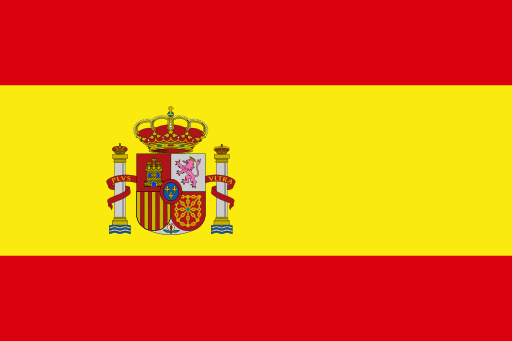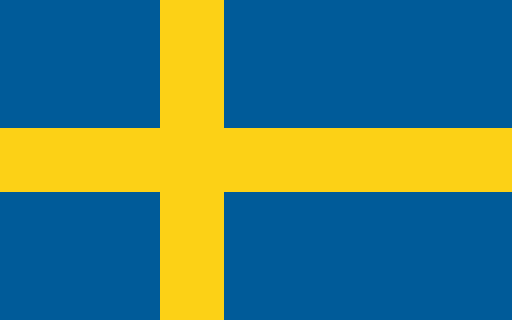|
|
 |
Articles
|
|
History of Jazz
|
|
|
Observation
http://www.new-dating.com/search.php
|
1800s
African American music traditions had already been a part of mainstream popular music in the United States for generations, going back to the 19th century minstrel show tunes and the melodies of Stephen Foster. Public dance halls, clubs, and tea rooms opened in the cities. Black dances inspired by African dance moves, like the shimmy, turkey trot, buzzard lope, chicken scratch, monkey glide, and the bunny hug eventually were adopted by a white public.
The cake walk, developed by slaves as a send-up of formal dress balls, became popular. White audiences saw these dances in vaudeville shows. The popular dance music of the time were blues-ragtime styles. Tin Pan Alley composers like Irving Berlin incorporated ragtime influences into their compositions.
1910s
Dixieland/New Orleans Jazz
A number of regional styles contributed to the development of jazz. In the New Orleans, Louisiana area an early style of jazz called "Dixieland" developed. New Orleans had long been a regional music center. In addition to the slave population, New Orleans also had North America's largest community of free people of color. The New Orleans style used more intricate rhythmic improvisation than ragtime, and incorporated "blues" style elements including "bent" and "blue" notes, and using the European instruments in novel ways.
Key figures in the development of the new style were trumpeter Buddy Bolden and his band, who arranged blues tunes for brass instruments and improvised; Freddie Keppard, a Creole who was influenced by Bolden; Joe Oliver, whose style was bluesier than Bolden's; Kid Ory, a trombonist who refined the style; and Papa Jack Laine, who led a multi-ethnic bands.
Other regional styles
Meanwhile, other regional styles were developing which would influence the development of jazz.
In 1891 African-American minister Rev. Daniel J. Jenkins of Charleston, South Carolina established the Jenkins Orphanage. Orphanage bands were trained to perform popular and religious music; members such as William "Cat" Anderson, Gus Aiken, and Jabbo Smith went on to play with jazz bandleaders like Duke Ellington, Lionel Hampton and Count Basie.
In the northeastern United States, a "hot" style of playing ragtime developed, characterized by rollicking rhythms, without the bluesy influence of the southern styles. The solo piano version of the northeast style was typified by Eubie Blake. James P. Johnson developed "stride" piano playing, in which the right hand plays the melody, while the left hand provides the rhythm and bassline. Johnson influenced later pianists like Fats Waller and Willie Smith. James Reese Europe was a prominent orchestra leader. Tim Brymn performed with a northeastern "hot" style.
In Chicago in the early 1910s, saxophones vigorously "ragged" a melody over a dance band rhythm section, blending New Orleans styles and creating a new "Chicago Jazz" sound.
Along the Mississippi from Memphis, Tennessee to St. Louis, Missouri, the "Father of the Blues," W.C. Handy popularized a less improvisation-based approach, in which improvisation was limited to short "fills" between phrases.
1920s
The King & Carter Jazzing Orchestra photographed in Houston, Texas, January 1921.With Prohibition, the constitutional amendment that forbade the sale of alcoholic beverages, speakeasies emerged as nightlife settings, and many early jazz artists played in them. The inventions of the phonograph record and of radio helped the proliferation of jazz as well. Radio stations helped to popularize Jazz, which became associated with sophistication and decadence that helped to earn the era the nickname of the "Jazz Age." In the early 1920s, popular music was still a mixture of things: current dance songs, novelty songs, and show tunes.
1930s
Big bands
While the solo became more important in jazz, popular bands became larger in size. The Big bands such as Benny Goodman's Orchestra were highly jazz oriented, while others (such as Glenn Miller's) left less space for improvisation. Key figures in developing the big jazz band were arrangers and bandleaders Fletcher Henderson, Don Redman and Duke Ellington.
Over time, social strictures regarding racial segregation began to relax, and white bandleaders began to recruit black musicians. In the mid-1930s, Benny Goodman hired pianist Teddy Wilson, vibraphonist Lionel Hampton, and guitarist Charlie Christian to join small groups. During this period, swing and big band music were very popular.
The influence of Louis Armstrong can be seen in bandleaders like Cab Calloway, trumpeter Dizzy Gillespie, and vocalists like Bing Crosby, who were influenced by Armstrong's style of improvising. The style further spread to vocalists such as Ella Fitzgerald and Billie Holiday; later, Frank Sinatra and Sarah Vaughan, among others, would jump on the scat bandwagon.
An early 1940s style known as "jumping the blues" or jump music used small combos, up-tempo music, and blues chord progressions. Jump blues drew on boogie-woogie from the 1930s, with the rhythm section playing "eight to the bar," (eight beats per measure instead of four). Big Joe Turner became a boogie-woogie star in the 1940s, and then in the 1950s was an early rock and roll musician. (Also see saxophonist Louis Jordan).
Kansas City Jazz
Memorial to Charlie Parker at the American Jazz Museum at 18th and Highland in Kansas CityMain article: Kansas City Jazz
Kansas City Jazz in the 1930's marked the transition from big bands to the bebop influence of the 1940s. Tom Pendergast encouraged the development of night clubs featuring musical improvisation. In 1936, the Kansas city era waned when producer John H. Hammond began sending Kansas City acts to New York City.
European Jazz
Outside of the United States the beginnings of a distinctly European jazz started emerging. At first this came mostly in France with the Quintette du Hot Club de France being among the first non-US bands of significance to jazz history. The playing of Django Reinhardt in particular would be important to the rise of gypsy jazz, which is one of the earliest genres to start outside the US.
1940s
Bebop
In the 1940s with bebop performers such as saxophonist Charlie "Yardbird" Parker, pianist Bud Powell and trumpeter John Birks "Dizzy" Gillespie helped to shift jazz from danceable pop music to more challenging "musician's music." Other bop musicians included pianist Thelonious Monk, drummer Kenny "Klook-Mop" Clarke, saxophonist Coleman Hawkins, trumpeters Clifford Brown, Fats Navarro, saxophonists Wardell Gray, Sonny Stitt, bassist Ray Brown, drummer Max Roach.
Bop musicians valued complex improvisations based on chord progressions over a sophisticated harmonic vocabulary. Hard bop (also known as The Bop Revolution) of the late 1950s used rootless voicings where the tonic or "root" is not included), and an increased use of extensions, non-diatonic notes such as the tritone (flattened fifth), and stacked chords — for instance, playing a E-flat major triad against a C7, making it a C7#9.
1950s
Free jazz and avant-garde jazz
Main articles: Free jazz, Avant-garde jazz
Free jazz and avant-garde jazz, are two partially overlapping subgenres that, while rooted in bebop, typically use less compositional material and allow performers more latitude. Free jazz uses implied or loose harmony and tempo, which was deemed controversial when this approach was first developed. Avant-garde jazz has more "rules" than free jazz, in that performances are partly composed, but the improvised parts are almost as free as in free jazz.
Early performances of these styles go back as early as the late 40s and early 50s: Lennie Tristano's Intuition and Digression (1949) and Descent into the Maelstrom (1953) are often credited as anticipations of the later free jazz movement, though they seem not to have had a direct influence on it. The first major stirrings of what free jazz came in the 1950s, with the early work of Ornette Coleman and Cecil Taylor. In the 1960s, performers included John Coltrane, Archie Shepp, Albert Ayler, Sun Ra, Makanda Ken McIntyre, Pharoah Sanders, Sam Rivers, Leroy Jenkins, Don Pullen, Dewey Redman and others. Peter Brötzmann, Ken Vandermark, William Parker, Derek Bailey and Evan Parker are leading contemporary free jazz musicians, and musicians such as Coleman, Taylor and Sanders continue to play in this style. Keith Jarrett has been prominent in defending free jazz from criticism by traditionalists in recent years.
1960s
Latin jazz
Latin jazz has two varieties: Afro-Cuban and Brazilian jazz. Afro-Cuban jazz was played in the U.S. directly after the bebop period, while Brazilian jazz became more popular in the 1960s and 1970s.
Afro-Cuban jazz began as a movement in the mid-'50s. Notable bebop musicians such as Dizzy Gillespie and Billy Taylor started Afro-Cuban bands at that time. Gillespie's work was mostly with big bands of this genre. The music was influenced by such Cuban and Puerto Rican musicians as Tito Puente, Mario Bauza, Chano Pozo, and much later, Arturo Sandoval.
Brazilian jazz is synonymous with bossa nova, a Brazilian popular style which is derived from samba with influences from jazz as well as other 20th-century classical and popular music. Bossa is generally slow, played around 80 beats per minute with straight, rather than swing, eighth notes, and difficult polyrhythms. The best-known bossa nova compositions have become jazz standards.
The related term jazz-samba essentially describes an adaptation of bossa nova compositions to the jazz idiom by American performers such as Stan Getz and Charlie Byrd, and usually played at 120 beats per minute or faster. Samba itself is actually not jazz but, being derived from older Afro-Brazilian music, it shares some common characteristics.
|
Observation
http://www.new-dating.com/search.php
|
|
|






